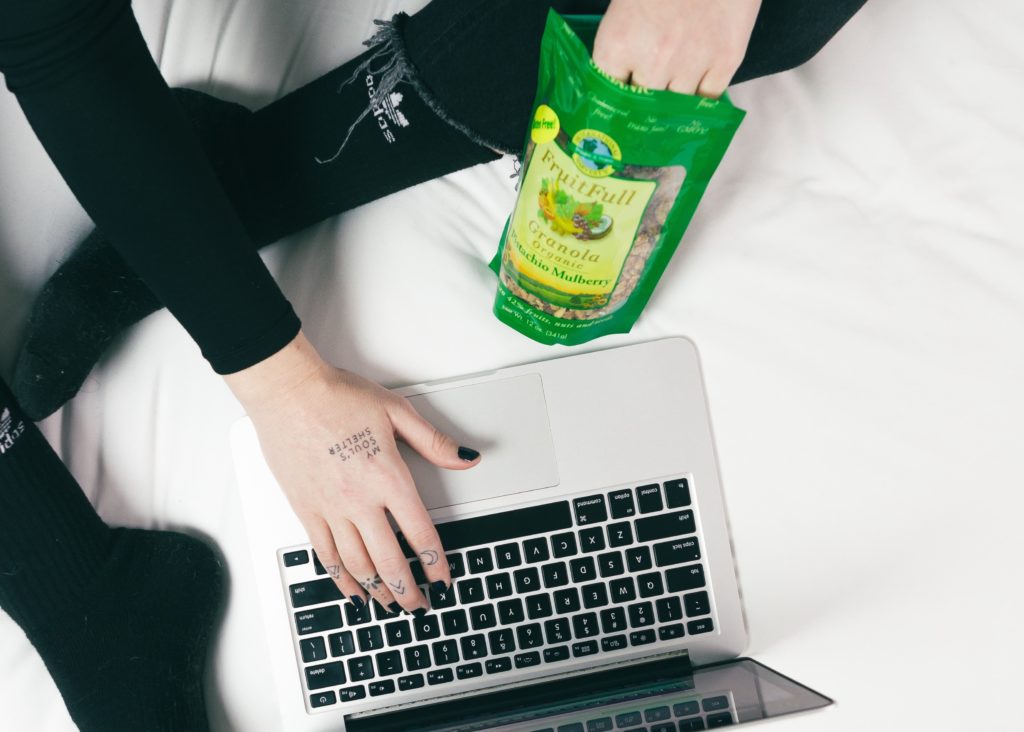The Research Behind “Pathological Buying,” AKA Why You Find Yourself Shopping Online At 3 AM

When I was younger, the only way to get a bargain price on designer items was by shopping at local thrift stores. Now, it’s easier than ever to score designer duds for less. With flash sales sites and big-box retailers like Rue La La and Nordstrom Rack just a click away, online shopping has become a compulsion. For example, on the Nordstrom Rack site, I peruse the sales section and sort items by “Best Value.” If I see a good deal, I swallow it up. And I can’t stop.
Pathological buying: Why do we get so addicted to online shopping?
The feeling I get from scoring what I deem is a good deal is like a high that I chase each time a new sales email floats into my inbox. I’ve even made a legitimate side hustle out of online shopping for sartorial excellence by reselling clothes and accessories for more than I spent on them. However, now that my clothes have taken on a lifeform of their own (growing limbs in all directions, tripping me on my way to the kitchen, hiding my tote bag from me), I am motivated to curb my addiction. Because I realize that’s what this is — an addiction.
According to a 2015 study published by PLoS One:
The Internet provides characteristics that seem to encourage PB (pathological buying), such as the opportunity to buy 24 hours a day, to shop from the convenience of the private home, or to use easy payment systems that lead to inadvertent expenses. Therefore, the question remains whether online PB is a distinct clinical condition or whether it is the mere translation of PB in conventional retail environments to another medium.
From my experience, I believe it’s the latter; that pathological buying is a condition of specifically being able to shop the stores I like online rather than in person. The convenience, ease, and sense of privacy that online shopping provides enables my craving — the result of which is pathological buying.
The study illustrates that behaviors behind online PB include “buying [while] unobserved, avoiding social interaction, the presence of a greater product variety, or the possibility to satisfy an urge to buy more quickly,” and that “there is empirical evidence that online PB is associated with higher reward responsiveness, excitement, and enjoyment.” Where shopping used to be treated as a social event with friends, I now find myself browsing sale items while Netflix plays in an adjacent browser. Because I am constantly shopping online, my purchases aren’t out of necessity — they are motivated purely by the excitement that comes from finding a good deal.
E-commerce retailers understand that there is a direct correlation between online shopping and excitability. They capitalize on this knowledge by inundating us with flash sales and “limited time only” messages. If it works on me, I know it is working on other women who also harbor an urge to buy anonymously, in the privacy of their own homes. By understanding the psychology behind my desire to shop online, I feel empowered to take back control.
Here are a few ways I plan to get my pathological buying under control:
Audit time & money spent online shopping
This step is similar to creating a budget for the first time. When I looked at my order history with Nordstrom Rack for the past three months, I saw that I spent $451.90 on a combination of orders. Despite returning most items and selling one of the items for a profit on Poshmark, I was most shocked by the amount of time I dedicated to this habit. The hours spent searching, buying, returning, and selling was overwhelming. Had I put my energy into learning a new language, I’d likely be conversational by now. This brings me to my next action item.
Limit my screen time
I won’t fool myself by saying I’ll never shop online again, but I do intend on decreasing the frequency of it. I know that focusing on the hobbies that make me happy (reading, going for walks, working on my website) will help me reach an intrinsic state of satisfaction. Time management is a weak spot of mine, but realizing how many hours I wasted online shopping is a serious wake-up call, and I am determined to make this a priority.
Live like a minimalist
Marie Kondo’s methods scare me because I hate getting rid of things. The same box of random crap has followed me from apartment to apartment because I believe I might still find the rightful home for the ambiguous skinny cord. Unfortunately, each random thing has turned into a colossal amount of useless stuff that is cluttering my home. This summer, I plan to take a page out of Kondo’s book and start fresh. This means emptying every closet, drawer, and cupboard to look at what I own with fresh eyes. If it’s not something I love or need, it will be sold, donated or trashed. I’m looking at you, random cord.
When she’s not writing about the money-saving hacks that helped her save $25k in a year, Sasha is taking to the skies with her sister Melissa. Their Instagram account, @JetsettingJunkies, and website feature their travels from all over the world. DM Sasha for money tips and advice on traveling often and cheaply!
Image via Unsplash
Like this story? Follow The Financial Diet on Facebook, Instagram, and Twitter for daily tips and inspiration, and sign up for our email newsletter here.




